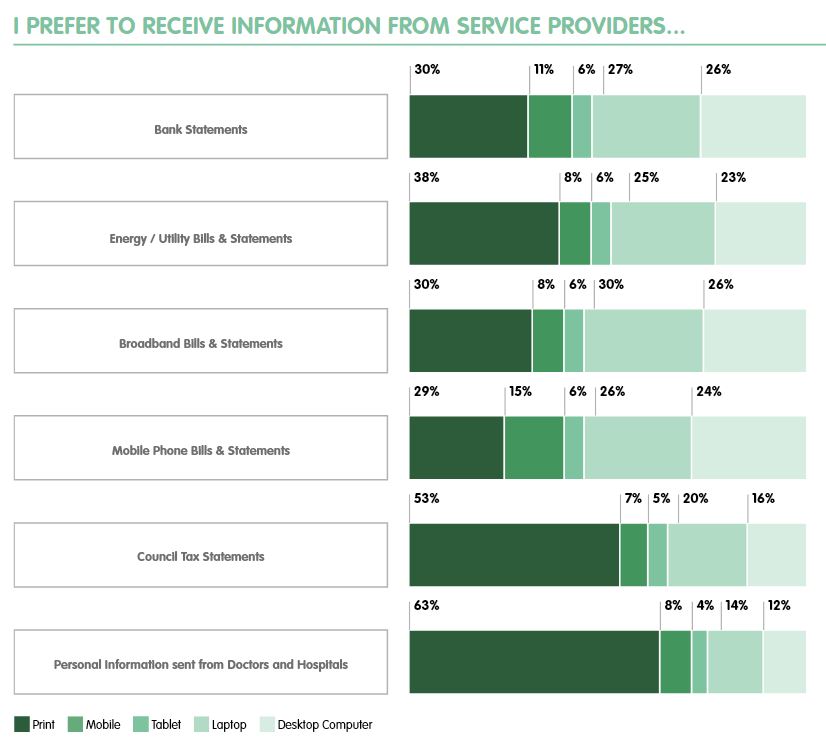A report, commissioned by TSA Limited (TSA), a not-for-profit industry funded organisation developing sales and marketing campaigns to promote the paper and print industries, makes some interesting comments on the down side to digital.
According to The Australian Bureau of Statistics, 87% of Australians access the internet daily with an average of 10 hours a day spent on an internet connected device. With many of our daily tasks now being carried out digitally, consumers are becoming increasingly aware of how much time they are staring at screens.
Findings from a 2017 Toluna survey, a study into Australian consumer preferences, trust and attitudes towards print and paper in a digital world, indicate that Aussies do know when enough is enough with many choosing to disconnect from the online world and get back in touch with print to reduce the digital overload.
Specifically, the findings showed that 48% agree they spend too much time on electronic devices, with 34% saying they are suffering from digital overload. In addition to this, 52% are concerned the overuse of electronic devices could be damaging to their health, including symptoms of eyestrain, sleep deprivation and headaches.
The report highlights the differences between consumer segments, and their preferences.
When the data was broken down into age demographics by channel, reading preference remains relatively the same across all channels for each age group. For example, Generation X recorded a consistent preference for print across newspapers/news (41%), magazines (42%), books (43%) and product catalogues (42%) showing only a 2% difference across all four of the channels. At the same time, analysis of the data shows there are large preference discrepancies between age groups. For example, Millennials represent 60% of the 11% of those who prefer to read their newspaper/news on mobile, whereas Baby Boomers only represent 7% of them.
When looking at how consumers prefer to receive information from service providers, results indicate consumers prefer to receive information in print, with the highest being from council or doctors. However, if we combine the two computer channels (laptop/desktop) a preference trend line can be drawn in favour of digital for utility and telecommunications. Tablets are the least preferred for receiving information from service providers.
Interestingly, preference for mobile phone bills and statements via mobile sees the highest preference at 15% for mobile compared to other service providers. Mobile service providers are evidently utilising their channel well, as otherwise, mobile sits second lowest in preference next to tablets.
The advancements of digital technologies enabling everything from communicating globally to fighting disease are irreplaceable – however, our desire to engage with them 24/7 seems to be waining.
The Toluna study found that consumers prefer print for leisure and for consuming news media, reporting that 72% prefer to read books and magazines in print, and 56% prefer to read newspapers in print. To combat digital overload, and align with consumer’s preferences for paper and print, it seems analogue methods are making a comeback.
Similar to the resurgence of vinyl and old school photography, stationary and physical daily planners are flying out the door and companies like kikki.K and Typo among others, are reaping the benefits. What was accused of being dead is coming back and we are seeing more and more consumers turning to print and other analogue channels with 66% believing it is important to “switch off”.


